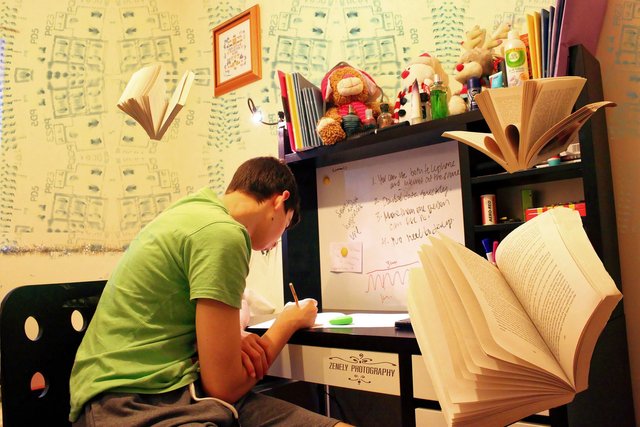A Step-by-Step Guide for Teaching a Unit on Informative Writing
Far too many teachers in the United States do not feel confident in their ability to teach writing. According to a study conducted by Dr. Steven Graham of Arizona State University and Dr. Gary Troia of Michigan State University, most teachers have not taken a college course designed for them to learn how to teach writing. To make matters worse, the National Center for Educational Statistics reported that 24% of students wrote at a proficient level on the National Assessment for Educational Progress. For these reasons, teachers need a clear guide on how to best teach writing to their students.
Here is an example of how to design and execute a perfect informative writing unit for elementary students. Keep in mind that a writing unit should take between seven and ten days in elementary school since they are so new to the process. For the sake of example, the topic of this informative writing unit will be animals.
It is a terrific idea if, throughout the entire course of this unit, the teacher has a topic of his or her own to use when modeling the following writing strategies.

Day 1: Prewriting-Brainstorming
After introducing the theme of the unit, teach students how to brainstorm, which is the first step of the writing process.
Lesson Goal: Students will choose a topic.
Suggested Activity: Play "Quiz Quiz Trade"; in this game students each hold a picture of a random animal. They walk around the room and quiz their partner by asking what he or she knows about their animal. After they have both had a chance to speak, they trade cards and move on to find a new partner.
Rationale: Dr. Graham and Dr. Amy Gillespie discovered in a meta-analysis of research on effective writing instruction that brainstorming is the first stage of the writing process.
Days 3 & 4: Prewriting-Researching
Lesson Goals: Students will self-generate at least three ideas they think their readers will want to learn about their animal. They will then use various sources to find content which supports these ideas for the body of their writing.
Suggested Activity: Provide students with various trade books, articles, and internet sources and encourage them to write interesting facts about their self-generated questions in a circle map. Teachers can find free copies of circle maps online. The topic goes in the middle, and students divide the circle into equal sections, representing the number of main ideas they desire to present in their writing piece. The students simply write in the facts or details that support each idea in the appropriate section. If two or more students have the same topic, allow them to work in pairs. Numerous studies on writing instruction demonstrate that collaborative learning has a moderately high positive impact on writing achievement. This activity will require teacher modeling in front of the class before expecting students to engage in this activity independently. This activity will require modeling by the teacher first.
Rationale: Researchers at the University of Maryland advocate for a method of student inquiry similar to this called Concept-Oriented Instruction because it increases motivation, knowledge, and reading comprehension.

Day 4: Prewriting-Organizing
Lesson Goal: Students will fill out completely their tree map. Teachers can find free copies of this map online.
Suggested Activity: Students have their minimum of three main ideas, and hopefully after two lessons worth of research, a lot of interesting details to support these ideas in their circle maps. Teachers may assume students can complete this step without guidance, but it is not always so simple for them. This step will require teacher modeling in front of the entire class. Demonstrate in before the class how to take each self-generated question and transfer them into the large rectangles designated for main idea topic sentences.
Rationale: Dr. Graham considers this organization phase to allow for the next stage, drafting, to flow with minimal obstacles.
Days 5 & 6: Drafting
**Lesson Goal: **Students will use their tree map to produce a rough draft of their informative writing piece.
Suggested Activity: Before asking students to begin drafting, the teacher should read aloud a high-quality nonfiction book about an animal. The teacher and students should discuss the decisions the author of the book made while writing. This discussion should include the use of the following: whether or not the author caught the reader's attention in the introduction, headings or lack thereof, topic sentences, the stylistic layout of text, and other relevant features. After the reading and discussion, the teacher must model how to use the map from the previous lesson to draft, using an enticing introduction, topic sentences, details, a conclusion, or whatever skills or strategies the teacher wants students to practice during this unit.
Finally, the students should begin drafting with the idea in mind that they can, but are not obligated to, use some of the techniques that the author used. The teacher and students should repeat this process for a minimum of two days with a different nonfiction text about an animal each time. Teacher modeling should occur on both days.
Rationale: Writing instruction expert Ruth Culham argues that children best learn how to write well by studying high-quality writing. She calls these pieces of writing mentor texts.

Day 7: Proofreading and Revising
Lesson Goals: Students will give at least two positive pieces of feedback and two constructive criticisms on their partners' writing.
Suggested Activity: Pair students to proofread and give feedback on each others' writing. Students will not complete this activity effectively in the absence of teacher modeling and explicit communication of expectations. It is not helpful if a student's feedback is saying, "Good job." Therefore, it is imperative that teachers communicate to students precisely what sorts of writing mechanics or stylistic elements they should be giving feedback on so that there is no confusion. As this is occurring throughout the classroom, teachers should be meeting with individual students to discuss their writing. This way, not only will receive feedback from other students AND the teacher before they edit and publish a final draft.
Rationale: Virtually all writing research indicates that proofreading is an essential component of the writing process. Additionally, education researcher John Hattie found that out of all instructional practices in classrooms, specific, targeted feedback has one of the largest effect sizes on student achievement.
Days 8, 9, & 10: Editing and Publishing
Lesson Goal: Taking into account the feedback they have received from peers and the teacher, students will edit and draft a final copy of their nonfiction animal writing piece.
Suggested Activity: The teacher should sit with small groups of struggling writers to guide them.
One phenomenal idea is for the teacher to tell his or her students that they will be publishing an animal book made out of all their pieces of writing to send home to parents.
Rationale: Dr. Lucy Calkins, Professor of Education at Columbia University and founder of the Reading and Writing Project, recommends that students have opportunities to write for a variety of audiences and purposes. Knowing that all of the parents and siblings of students in their class will likely motivate students to do their best writing for their published final copy.
The above time frame is only meant to serve as a guideline, as the days can be easily interchangeable. Some teachers may need more or fewer days for different stages of the writing process. The most important things for teachers to remember in this unit is that he or she MUST model every single strategy or activity that the students will be performing on a given day. Another important note is that throughout the entire unit, teachers can and should pull individuals or small groups of students to a table to conduct brief check-ins, conferences, and support sessions. Teachers can use this informative writing unit plan interchangeably with any expository writing topic of their choosing. If teachers follow this plan, students will be motivated and will begin to understand the process of writing an informative piece of writing from idea to completion.
To listen to the audio version of this article click on the play image.

Brought to you by @tts. If you find it useful please consider upvoting this reply.
Hello @dzboston33, thank you for sharing this creative work! We just stopped by to say that you've been upvoted by the @creativecrypto magazine. The Creative Crypto is all about art on the blockchain and learning from creatives like you. Looking forward to crossing paths again soon. Steem on!